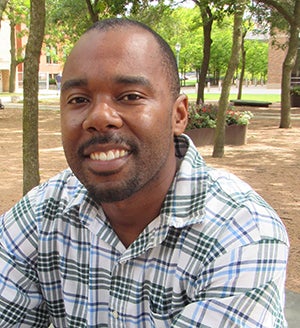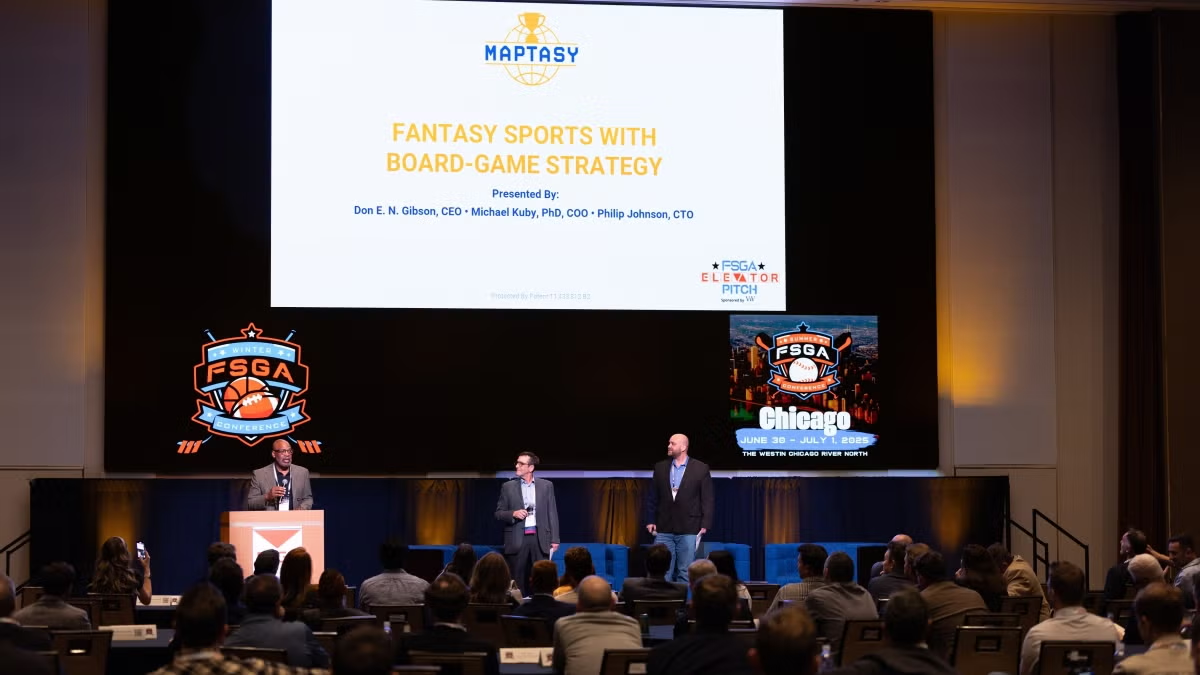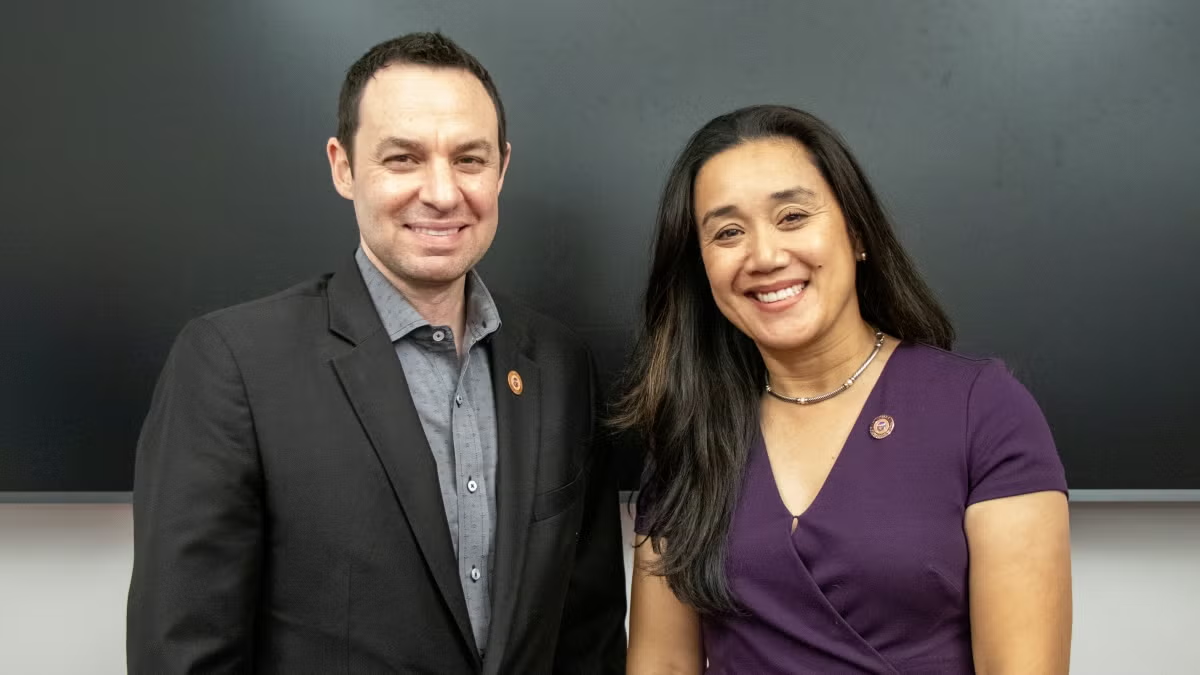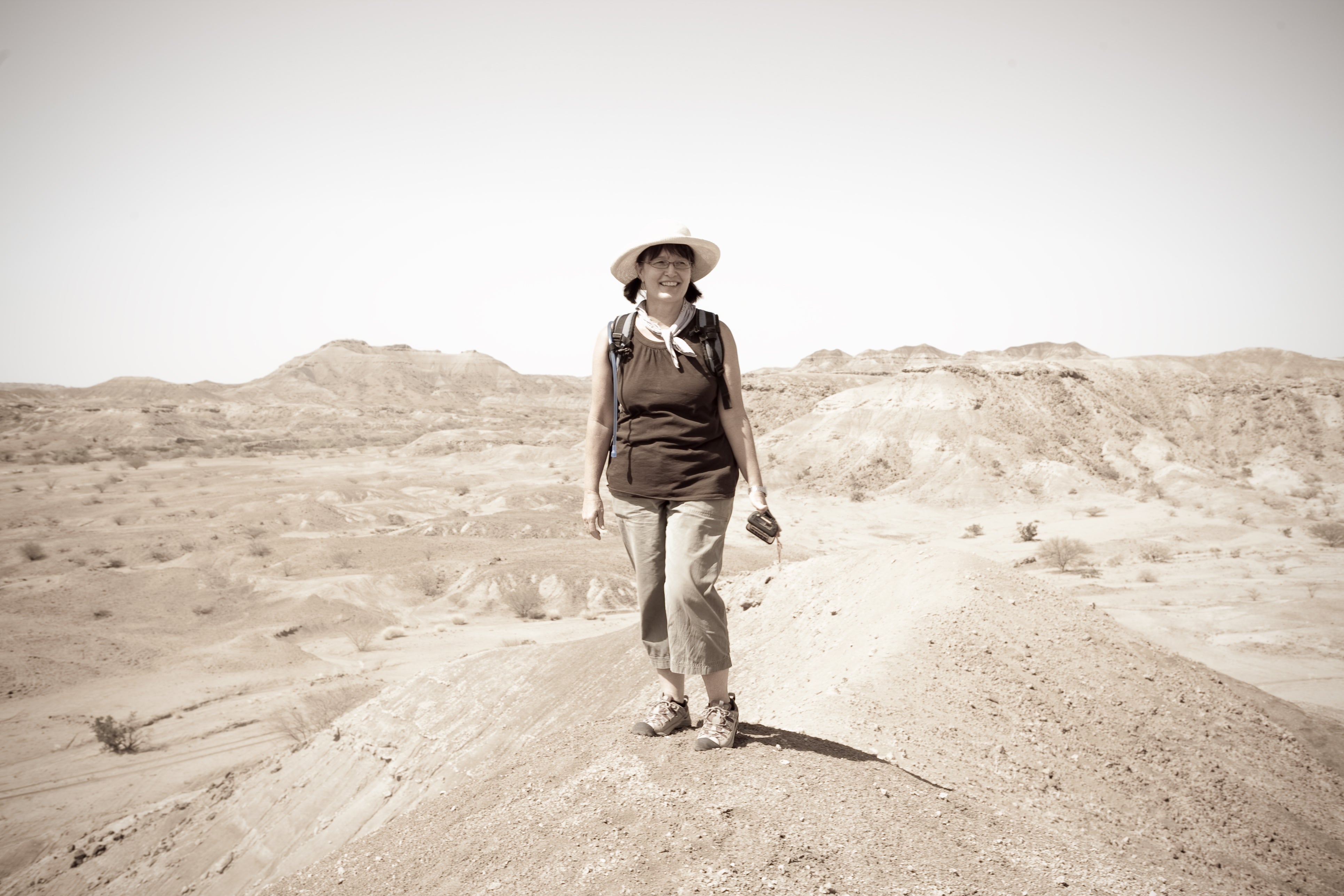Professors at Arizona State University come and go all the time.
It’s just the way of academia.
ASU News talked to two incoming teachers as they embark on their new careers, as well as two outgoing professors, who look back on their time in higher education.
Here's what they had to say as they each approach important milestones in their lives.
Retiring teachers
Joe Russomanno
Professor Joe Russomanno (pictured above) has been a fixture at the Walter Cronkite School of Journalism and Mass Communication for three decades, teaching thousands of students over the years. As he enters his 30th and final year teaching, he said he’s ready to pass the torch and move onto the next phase of his life.
“The best answer I suppose I can give you in terms of a reason for retirement is simply that it’s time,” said Russomanno, who was an award-winning radio and television journalist before he started teaching at ASU in 1994. “I have the opportunity and the wherewithal to retire comfortably, and I’m ready to delve into some things that I’ve put aside for a long time.”
Russomanno said his employment as a journalist was enjoyable but his career in academia has been far more rewarding.
“As an academic, you get to see the fruits of your work more readily, especially when working with students,” said Russomanno, who holds a PhD in communication and is an expert on the First Amendment. “There’s also the research aspect of my work. I have found teaching and research to be mutually beneficial. As a researcher, I adopted the mantra that the mission includes seeking knowledge and sharing it.”
Passing the torch comes with the wisdom that only comes courtesy of three decades of professional experience. He has advice for incoming faculty and journalism students.
“To those who are research faculty following a tenure track, I would offer this: Work hard, be productive and pursue your passions,” Russomanno said. “Students should recognize the critical importance of quality journalism in our democracy today and the tremendous responsibility that they have in exercising their First Amendment freedoms.”
Kaye Reed
When paleoanthropologist Kaye Reed retires in May 2024, Arizona State University will be losing a legendary researcher and a world-renowned academic.
But she doesn’t think it’s that big of a deal.
“Everybody is replaceable,” said Reed, a President’s Professor in the School of Human Evolution and Social Change and research scientist with the Institute of Human Origins at Arizona State University. “Yes, I have a lot of knowledge, but other people have knowledge and great ideas. Perhaps ASU may not replace me — maybe they need somebody else that can do a different kind of research at this moment in time?
“I think the hardest thing for people who are retiring to accept is the fact they don’t get to choose their replacement, and that it’s going to be fine without them,” Reed said.
Reed’s career has been filled with accolades and milestones, with lots of field research in Ethiopia and South Africa squeezed in between. She even has a scholarship endowment named after her. Perhaps Reed’s crowning achievement was when her field team discovered a 2.8 million-year-old jawbone that pushed back the known “first appearance date” of the genus Homo by approximately 400,000 years.
Retirement for Reed won’t be staid or boring. She plans on traveling (“outside of Africa”) and writing approximately 10 journal articles she’s put off for several years. Though her work is complex and challenging, her advice for people entering academia is fairly straightforward.
“Don’t ever write a chapter for a book until you’re at least an associate professor,” Reed cautioned. “Just do what you need to do in order to conduct your research.”
Reed, who has taught thousands of students over a quarter-century span, has advice for them as well.
“Try and find something you really enjoy doing and not something your parents want you to do,” Reed said. “You need to be able to learn about things that you love and are excited about. If students don’t do that, they get bored and don’t do well, and then maybe drop out.”
Reed said she won’t miss the pressures and obligations of academia but will miss the people in her profession.
“I have a great group of colleagues at ASU, so it’s sad that I won’t see them on a regular basis,” Reed said. “But otherwise, I’m OK.”
Incoming teachers

Abigail Gomez Morales
Abigail Gomez Morales has her dream job now, teaching HCR 400: Evidence-Based Practice for the Health Care Professional, in the Edson College of Nursing and Health Innovation.
It’s a job she wouldn’t have dared dream of after getting her degree in nursing in 2009 from the University of Barcelona, moving to Australia and, well, winding up in the circus.
To be precise, Gomez Morales, who was born in Barcelona, sold tickets for Cavalia, a large-scale multimedia performance often compared to Cirque du Soleil.
“I sold tickets, wandered around and visited the horses,” she said. “It was a blast.”
But it wasn’t a career. So after stops in London, Brazil — where she worked as a nurse — and Germany, Gomez Morales and her husband came to the U.S. in 2016. She received her PhD in nursing and health care innovation from the Edson College in 2022, and soon after started working as a teaching assistant for ASU 101, which introduces first-year students to the unique culture and opportunities at the nation’s largest university.
“That was my first encounter teaching students,” she said.
Gomez Morales called it a “miracle” to be hired as a full-time professor teaching HCR 400, a class designed to help nurses find the evidence and research they need to help patients.
“I’m going to teach them skills they can take anywhere,” Gomez Morales said. “I can go to class and learn about diabetes management, but I will learn about a specific thing. There are many things I won’t know about, and they’re impossible to learn in class.
“That’s where I come in, teaching them to find the best resource to provide care. Because once you go into the field, you’re going to have so many cases and so many scenarios that you never would have imagined. So where do you look for information to get past that freak out moment. That’s what I’m going to teach them.”

Cedric Burrows
Sometimes, where you grow up helps determine your career choices.
That’s the case for Cedric Burrows, who will be teaching a theories of literacy course in the English department’s Writing, Rhetorics and Literacies program starting in January 2024.
Burrows, who will be on research leave in the fall, grew up in Memphis, Tennessee, before receiving his bachelor’s degree at Alcorn State, his master’s degree at Miami University in Ohio and his PhD at the University of Kansas.
Growing up in Memphis exposed Burrows to the Civil Rights Movement. He had relatives who participated in the movement, including marching with Coretta Scott King, and he used to go on field trips to the National Civil Rights Museum.
“Learning about all the history made me interested in studying more about culture and also about the Civil Rights Movement and Black rhetoric as well,” said Burrows, who was a professor at Marquette University the last nine years. “It made me interested in seeing how, even though as a society we may speak the same language, how we interpret words is a lot different based on our background.”
Burrows said he was attracted to ASU because of its innovation and the university’s willingness to expand his research, which centers on civil rights museums and how they tell the story about the Civil Rights Movement.
Burrows is hopeful that by focusing on language and background in his class, he can teach students to better understand one another.
“I tell people all the time that we’re all walking texts, meaning that when we communicate with people, we bring in our history and our culture with us as well,” Burrows said. “And so, what happens when you communicate with people who may not be from your historical cultural background? It leads to misinterpretations because we don’t understand each other because of the past legacy of segregation and discrimination.
“What if we learn more about each other’s culture and each other’s history and, by extension, language, which is an extension of those other things. How will we learn to better communicate? And how can we work better in various settings, such as the work environment, or even just in everyday life, when we have to work together in some form?”
Top photo: Professor Joseph Russomanno speaks to students in his JCM 402: Mass Communication Law class on the first day of the fall semester, Aug. 17, in the Walter Cronkite School of Journalism and Mass Communication building on the Downtown Phoenix campus. He will be retiring after his 30th year at ASU and a successful radio and broadcast journalism career. Photo by Charlie Leight/ASU News
ASU News reporters Scott Bordow and Marshall Terrill contributed to this article.
More Law, journalism and politics

A new twist on fantasy sports brought on by ASU ties
A new fantasy sports gaming app is taking traditional fantasy sports and mixing them with a strategic, territory-based twist.Maptasy Sports started as a passion project for Arizona State University…

'Politics Beyond the Aisle' series to explore the stories of public officials
In an effort to build a stronger connection between students and political and civic leaders, Arizona State University’s School of Politics and Global Studies hosted the first event of its new series…

ASU committed to advancing free speech
A core pillar of democracy and our concept as a nation has always been freedom — that includes freedom of speech. But what does that really mean?Higher education doesn’t have an agenda to curate a…



